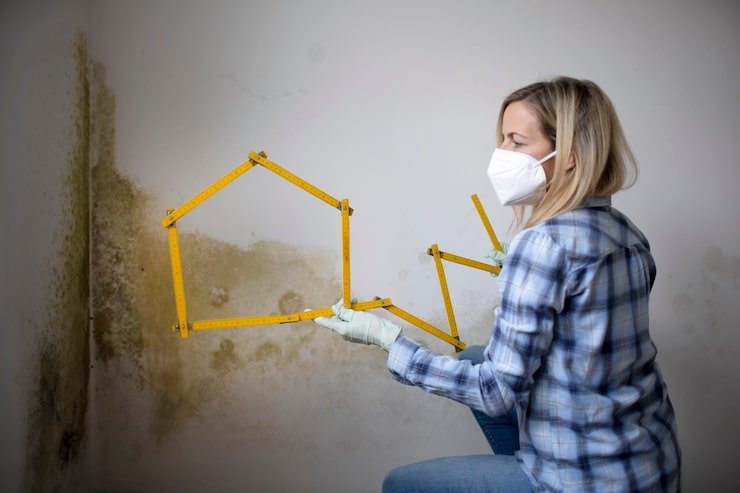Understanding the Risks of Radon and How Testing Can Protect Your Home
- admin323029
- Blog

Radon is a naturally occurring radioactive gas that can seep into your home, posing serious health risks. As a Massachusetts homeowner, it’s essential to understand the risks of radon and how radon testing can protect your family. Radon exposure has been linked to lung cancer, making it crucial for homeowners to take proactive steps in identifying and mitigating its presence.
At Elite Home & Mold Inspections, we specialize in radon testing, ensuring your home is safe from this silent threat. With our expertise, we provide thorough testing services that can offer peace of mind. In this blog post, we’ll explore the risks of radon and how testing can safeguard your home and family.
What is Radon?
Before diving into the risks of radon, it’s essential to understand what radon is. Radon is a colorless, odorless, and tasteless gas that occurs naturally as a byproduct of the decay of uranium, thorium, and radium found in soil, rock, and water. It can enter your home through cracks in the foundation, gaps around pipes, and other openings.
In Massachusetts, radon levels can vary significantly depending on location, and some homes are at greater risk than others. It’s important to test for radon regardless of whether your home is new or old, as it can be present in any property. The risks of radon are serious, and it’s crucial to take the necessary precautions to keep your living space safe.
The Health Risks of Radon Exposure
The risks of radon are not something to take lightly. Long-term exposure to high radon levels can lead to severe health issues, most notably lung cancer. In fact, radon is the second leading cause of lung cancer in the United States, right after smoking.
According to the U.S. Environmental Protection Agency (EPA), radon exposure causes thousands of deaths each year. It’s especially dangerous for smokers, as their lungs are already compromised, making them more susceptible to the harmful effects of radon.
Even in areas with lower radon levels, prolonged exposure can still be a significant health risk. That’s why radon testing is so important. Identifying high levels early on can help reduce the chances of long-term health problems for you and your family.
How Does Radon Enter Your Home?
Understanding how radon enters your home is key to recognizing the risks of radon. Radon typically infiltrates a home through the foundation. Since it’s a gas, it can seep through tiny cracks, gaps around pipes, and even spaces in your walls or floors. Once inside, it can accumulate, especially in lower levels of your home, such as the basement or crawl space.
Some homes may be at a higher risk of radon infiltration due to the type of soil beneath them. Homes built on rockier ground, for instance, may be more prone to radon accumulation. Other factors, such as the ventilation of your home and the tightness of your building materials, can also influence radon levels.
Where Does Radon Testing Fit In?
Radon testing is the only way to know if your home has unsafe levels of radon. At Elite Home & Mold Inspections, we use state-of-the-art radon testing equipment to provide an accurate reading of radon levels in your home. Our testing is comprehensive and reliable, ensuring that you have all the information you need to make informed decisions.
Radon testing can be done through short-term or long-term tests. Short-term tests typically take about 2-7 days, while long-term tests can measure radon levels over several months. While short-term testing gives an immediate snapshot of radon levels, long-term testing provides a more accurate picture of exposure over time.
If you live in Massachusetts or New Hampshire, it’s important to schedule regular radon tests, as levels can fluctuate based on environmental conditions. Testing in the winter months can often show higher levels of radon due to the way homes are sealed for warmth.
How to Protect Your Home from Radon
If radon testing reveals elevated levels in your home, there are several methods of mitigation available to reduce those levels and minimize the risks of radon. Some common radon mitigation techniques include:
- Sub-slab Depressurization: This involves installing a vent pipe and fan system beneath your home’s foundation to redirect radon gas away from the house.
- Crawl Space Ventilation: For homes with crawl spaces, installing a ventilation system can help reduce radon accumulation.
- Sealing Cracks and Gaps: While sealing cracks and gaps won’t eliminate radon entirely, it can help reduce the amount that enters your home.
- Improving Ventilation: Increasing airflow throughout your home can help prevent radon from accumulating in certain areas, such as the basement or lower levels.
A professional radon mitigation system should always be installed by a certified contractor. Elite Home & Mold Inspections can recommend reliable mitigation experts in Massachusetts and New Hampshire if radon is detected in your home.
Why Regular Radon Testing is Crucial
Even if your home has been tested for radon in the past, it’s important to regularly re-test to ensure the levels haven’t changed. Radon levels can fluctuate due to a variety of factors, including changes in the weather, the movement of the soil, or modifications to your home’s structure.
In Massachusetts, the risks of radon can be particularly concerning due to the varying geology of the region. Homes in areas with granite or other uranium-rich rocks may have higher radon levels, which is why regular testing is essential.
Testing your home every 2 to 5 years is a good rule of thumb. If you’ve made structural changes to your home, such as finishing the basement or installing a new heating system, it’s a good idea to re-test to ensure that radon levels have not been impacted.
Conclusion: Protect Your Home with Radon Testing
Radon is an invisible and silent threat, but testing can help protect your home and family from the risks of radon. The key to keeping your Massachusetts home safe is to stay proactive about radon testing and mitigation. By understanding how radon enters your home and the health risks associated with it, you can take the necessary steps to keep your living environment healthy.
At Elite Home & Mold Inspections, we offer professional radon testing and mitigation services to ensure your home is safe from harmful radon exposure. If you live in Massachusetts or New Hampshire, don’t wait—schedule your radon test today and safeguard your home.
Learn more about our services here or find us on Google Maps.
FAQs
1. What are the risks of radon exposure?
Long-term exposure to high levels of radon can cause lung cancer. It is the second leading cause of lung cancer after smoking, and even low levels can be harmful over time.
2. How do I know if my home has radon?
The only way to know if your home has radon is through radon testing. Testing can identify whether your home’s radon levels exceed the EPA’s safety standards.
3. Is radon testing necessary if I’ve lived in my home for years?
Yes. Radon levels can change over time due to shifts in the soil, weather patterns, or home construction. Regular radon testing ensures ongoing protection.
4. Can I mitigate radon in my home?
Yes, there are several ways to reduce radon levels, such as sub-slab depressurization and improving ventilation. Elite Home & Mold Inspections can recommend mitigation options based on your test results.
5. How often should I test my home for radon?
It’s recommended to test every 2 to 5 years, especially if you’ve made structural changes to your home or live in an area known for high radon levels.
Are you worried about the cleanliness of your space?
Let us help you! Cleaning services are our specialty, and we offer a complete range of cleaning and maintenance services. Get a free estimate!




